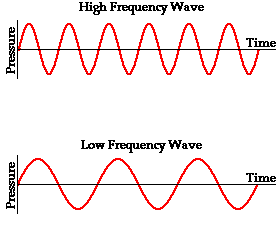Physics of Sound
I know you're probably anxious to get busy building your new home studio right away.
But before we get into just how you will record your own sounds, it may be useful to understand some basics on the physics of sound.
Many of the concepts discussed on this site require a minimal knowledge of some key ideas.
At the risk of having your eyes glaze over with complete boredom... here's a quick overview that may be useful.
Even if you are already familiar with these concepts, I hope I can put a fresh spin or new perspective on them for you.
So let's get into it, and what better place to start than by asking some fundamental questions with some deceivingly complex answers?
What is Music?
Although it's impossible to truly describe music in words, we can still understand the fundamentals of how it works.
We can argue what we would consider "good" vs "bad" music, but we can all agree that music is made up of sounds.
Vocal sounds, guitar sounds, piano sounds, percussive sounds, kazoo sounds, laser light-sabre sounds.
The list goes on and on...
Regardless of what specific types are chosen, the fact remains that all music relies on sound as the vehicle to deliver its message to the audience.
So that leads to our next question of...
What is Sound?
As musicians we are concerned with the Sound of Music... and I'm not taking about an Austrian musical here.
Even though I think we can all agree that it is an all-time classic...
Ok back to the science of it all.
At its most basic level sound is a pressure differential in a medium.
Wow, how useless was that?!?
Let's try it another way.
These pressure waves that deliver the sounds we experience in our lives are just one Audio Signal that we need to understand in our quest for sonic mastery.
Ultimately, we care about the way sound travels through air.

In the above picture, we can see that there more waves in the top picture than the bottom one.
We can say that the top wave has a higher frequency when compared to the bottom wave.
If the elapsed time across the entire picture was 1 second, the top wave is 6 Hz (6 cycles for every 1 second) while the bottom wave is 3 Hz (3 cycles for every 1 second).
The top wave has a higher frequency and therefore would produce a sound higher than the bottom wave.
We could never hear it however, since human hearing ranges from ~20 Hz to ~20,000 Hz.
Easy on the Numbers, Slick
This is big picture stuff, lets not get stuck in the details.
I promise there will be less numbers and theory as we get further along, but this is a useful foundation for discussing Sampling Rates.
See that wasn't so bad. Part of music's addiction is that you are doing math without even knowing it.
The physics of sound is a sneaky, stealth type of math... but math all the same, my friends.
In any event, let's get back to the task at hand. We have a studio to create!
Another term that will pop up quite often is the Decibel , or dB for short.
This is basically a measurement of the loudness or intensity of the signal level.
Click on the link above for a more thorough explanation.
So enough with the science explanations. It's time for the next important question...
How Does this Relate to My Studio?
We talkin bout money here - So listen up!
Higher sampling rates means more expensive ADCs and DACs (Analog-to-Digital and Digital-to-Analog converters).
The components will define the quality of your recording.
But we are not a professional studio, so we don't have to break the bank to get the quality we need.
In the end we want sound quality that is right for you... not the theoretical perfect reproduction.
We are making a home recording studio to address your needs.
As you continue on you'll see that you don't need to spend a fortune to sound like a million bucks.
With a basic understanding of the Physics of Sound, you can get started with even a modest budget.
Of course, like any thing the sky is the limit... but where's the fun in that??









